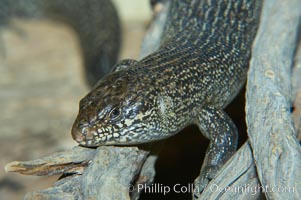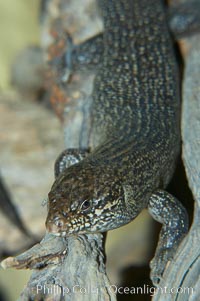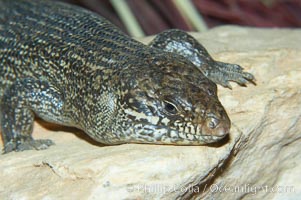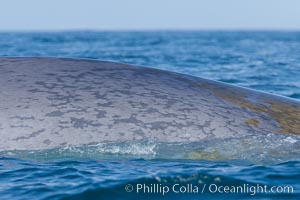
Blue whale rounding out at surface, before diving for food, showing characteristic blue/gray mottled skin pattern.
Species: Blue whale, Balaenoptera musculus
Location: Dana Point, California
Image ID: 27347
Species: Blue whale, Balaenoptera musculus
Location: Dana Point, California
Image ID: 27347
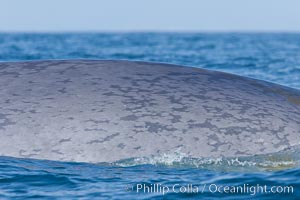
Blue whale rounding out at surface, before diving for food, showing characteristic blue/gray mottled skin pattern.
Species: Blue whale, Balaenoptera musculus
Location: Dana Point, California
Image ID: 27348
Species: Blue whale, Balaenoptera musculus
Location: Dana Point, California
Image ID: 27348
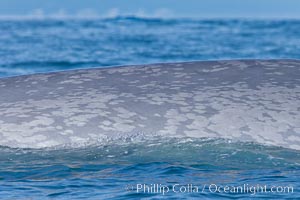
Blue whale rounding out at surface, before diving for food, showing characteristic blue/gray mottled skin pattern.
Species: Blue whale, Balaenoptera musculus
Location: Dana Point, California
Image ID: 27349
Species: Blue whale, Balaenoptera musculus
Location: Dana Point, California
Image ID: 27349
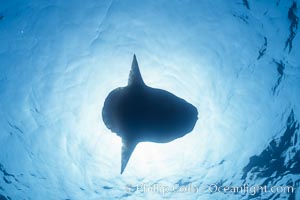
Ocean sunfish viewed from below, sunning/basking at surface, open ocean.
Location: San Diego, California
Image ID: 03490
Location: San Diego, California
Image ID: 03490
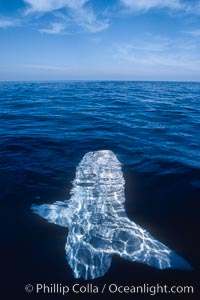
Ocean sunfish basking on the ocean surface, open ocean.
Location: San Diego, California
Image ID: 36313
Location: San Diego, California
Image ID: 36313
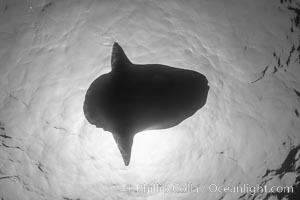
Ocean sunfish viewed from below, sunning/basking at surface, open ocean.
Location: San Diego, California
Image ID: 36314
Location: San Diego, California
Image ID: 36314
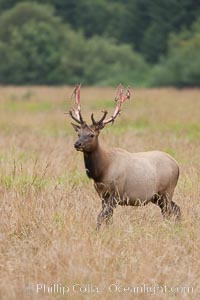
Roosevelt elk, adult bull male with large antlers. This bull elk has recently shed the velvet that covers its antlers. While an antler is growing, it is covered with highly vascular skin called velvet, which supplies oxygen and nutrients to the growing bone; once the antler has achieved its full size, the velvet is lost and the antler's bone dies. This dead bone structure is the mature antler, which is itself shed after each mating season. Roosevelt elk grow to 10' and 1300 lb, eating grasses, sedges and various berries, inhabiting the coastal rainforests of the Pacific Northwest.
Species: Roosevelt elk, Cervus canadensis roosevelti
Location: Redwood National Park, California
Image ID: 25898
Species: Roosevelt elk, Cervus canadensis roosevelti
Location: Redwood National Park, California
Image ID: 25898
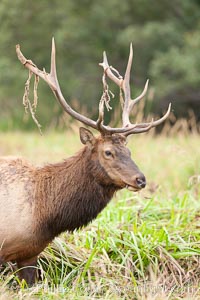
Roosevelt elk, adult bull male with large antlers. This bull elk has recently shed the velvet that covers its antlers. While an antler is growing, it is covered with highly vascular skin called velvet, which supplies oxygen and nutrients to the growing bone; once the antler has achieved its full size, the velvet is lost and the antler's bone dies. This dead bone structure is the mature antler, which is itself shed after each mating season. Roosevelt elk grow to 10' and 1300 lb, eating grasses, sedges and various berries, inhabiting the coastal rainforests of the Pacific Northwest.
Species: Roosevelt elk, Cervus canadensis roosevelti
Location: Redwood National Park, California
Image ID: 25901
Species: Roosevelt elk, Cervus canadensis roosevelti
Location: Redwood National Park, California
Image ID: 25901
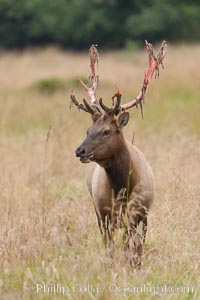
Roosevelt elk, adult bull male with large antlers. This bull elk has recently shed the velvet that covers its antlers. While an antler is growing, it is covered with highly vascular skin called velvet, which supplies oxygen and nutrients to the growing bone; once the antler has achieved its full size, the velvet is lost and the antler's bone dies. This dead bone structure is the mature antler, which is itself shed after each mating season. Roosevelt elk grow to 10' and 1300 lb, eating grasses, sedges and various berries, inhabiting the coastal rainforests of the Pacific Northwest.
Species: Roosevelt elk, Cervus canadensis roosevelti
Location: Redwood National Park, California
Image ID: 25905
Species: Roosevelt elk, Cervus canadensis roosevelti
Location: Redwood National Park, California
Image ID: 25905
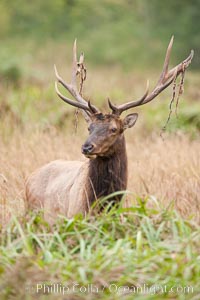
Roosevelt elk, adult bull male with large antlers. This bull elk has recently shed the velvet that covers its antlers. While an antler is growing, it is covered with highly vascular skin called velvet, which supplies oxygen and nutrients to the growing bone; once the antler has achieved its full size, the velvet is lost and the antler's bone dies. This dead bone structure is the mature antler, which is itself shed after each mating season. Roosevelt elk grow to 10' and 1300 lb, eating grasses, sedges and various berries, inhabiting the coastal rainforests of the Pacific Northwest.
Species: Roosevelt elk, Cervus canadensis roosevelti
Location: Redwood National Park, California
Image ID: 25907
Species: Roosevelt elk, Cervus canadensis roosevelti
Location: Redwood National Park, California
Image ID: 25907
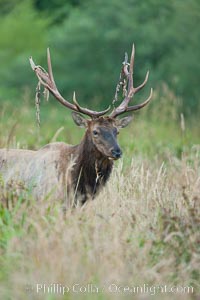
Roosevelt elk, adult bull male with large antlers. This bull elk has recently shed the velvet that covers its antlers. While an antler is growing, it is covered with highly vascular skin called velvet, which supplies oxygen and nutrients to the growing bone; once the antler has achieved its full size, the velvet is lost and the antler's bone dies. This dead bone structure is the mature antler, which is itself shed after each mating season. Roosevelt elk grow to 10' and 1300 lb, eating grasses, sedges and various berries, inhabiting the coastal rainforests of the Pacific Northwest.
Species: Roosevelt elk, Cervus canadensis roosevelti
Location: Redwood National Park, California
Image ID: 25908
Species: Roosevelt elk, Cervus canadensis roosevelti
Location: Redwood National Park, California
Image ID: 25908
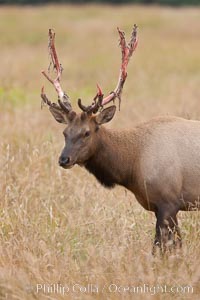
Roosevelt elk, adult bull male with large antlers. This bull elk has recently shed the velvet that covers its antlers. While an antler is growing, it is covered with highly vascular skin called velvet, which supplies oxygen and nutrients to the growing bone; once the antler has achieved its full size, the velvet is lost and the antler's bone dies. This dead bone structure is the mature antler, which is itself shed after each mating season. Roosevelt elk grow to 10' and 1300 lb, eating grasses, sedges and various berries, inhabiting the coastal rainforests of the Pacific Northwest.
Species: Roosevelt elk, Cervus canadensis roosevelti
Location: Redwood National Park, California
Image ID: 25909
Species: Roosevelt elk, Cervus canadensis roosevelti
Location: Redwood National Park, California
Image ID: 25909
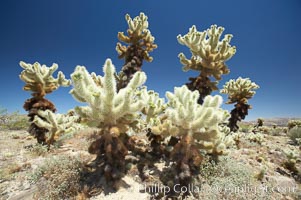
Teddy-Bear cholla cactus. This species is covered with dense spines and pieces easily detach and painfully attach to the skin of distracted passers-by.
Species: Teddy-bear cholla, Opuntia bigelovii
Location: Joshua Tree National Park, California
Image ID: 11981
Species: Teddy-bear cholla, Opuntia bigelovii
Location: Joshua Tree National Park, California
Image ID: 11981
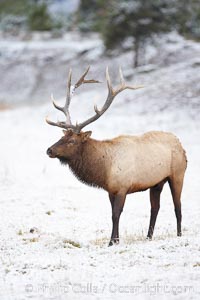
Large male elk (bull) in snow covered meadow near Madison River. Only male elk have antlers, which start growing in the spring and are shed each winter. The largest antlers may be 4 feet long and weigh up to 40 pounds. Antlers are made of bone which can grow up to one inch per day. While growing, the antlers are covered with and protected by a soft layer of highly vascularised skin known as velvet. The velvet is shed in the summer when the antlers have fully developed. Bull elk may have six or more tines on each antler, however the number of tines has little to do with the age or maturity of a particular animal.
Species: Elk, Cervus canadensis
Location: Yellowstone National Park, Wyoming
Image ID: 19749
Species: Elk, Cervus canadensis
Location: Yellowstone National Park, Wyoming
Image ID: 19749
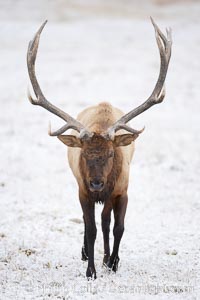
Large male elk (bull) in snow covered meadow near Madison River. Only male elk have antlers, which start growing in the spring and are shed each winter. The largest antlers may be 4 feet long and weigh up to 40 pounds. Antlers are made of bone which can grow up to one inch per day. While growing, the antlers are covered with and protected by a soft layer of highly vascularised skin known as velvet. The velvet is shed in the summer when the antlers have fully developed. Bull elk may have six or more tines on each antler, however the number of tines has little to do with the age or maturity of a particular animal.
Species: Elk, Cervus canadensis
Location: Yellowstone National Park, Wyoming
Image ID: 19767
Species: Elk, Cervus canadensis
Location: Yellowstone National Park, Wyoming
Image ID: 19767

Wire Pass narrows opens into the Buckskin Gulch. These narrow slot canyons are formed by water erosion which cuts slots deep into the surrounding sandstone plateau. This is a panorama created from ten individual photographs.
Location: Wire Pass, Paria Canyon-Vermilion Cliffs Wilderness, Arizona
Image ID: 20705
Panorama dimensions: 4366 x 16390
Location: Wire Pass, Paria Canyon-Vermilion Cliffs Wilderness, Arizona
Image ID: 20705
Panorama dimensions: 4366 x 16390
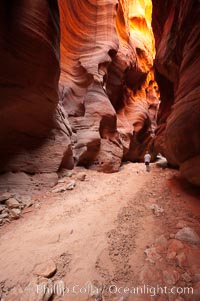
Hiker in Buckskin Gulch. A hiker considers the towering walls and narrow passageway of Buckskin Gulch, a dramatic slot canyon forged by centuries of erosion through sandstone. Buckskin Gulch is the worlds longest accessible slot canyon, running from the Paria River toward the Colorado River. Flash flooding is a serious danger in the narrows where there is no escape.
Location: Buckskin Gulch, Paria Canyon-Vermilion Cliffs Wilderness, Arizona
Image ID: 20710
Location: Buckskin Gulch, Paria Canyon-Vermilion Cliffs Wilderness, Arizona
Image ID: 20710
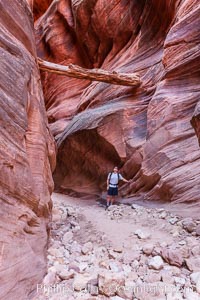
Suspended log in Buckskin Gulch. A hiker considers a heavy log stuck between the narrow walls of Buckskin Gulch, placed there by a flash flood some time in the past. Buckskin Gulch is the world's longest accessible slot canyon, forged by centuries of erosion through sandstone. Flash flooding is a serious danger in the narrows where there is no escape.
Location: Buckskin Gulch, Paria Canyon-Vermilion Cliffs Wilderness, Arizona
Image ID: 20717
Location: Buckskin Gulch, Paria Canyon-Vermilion Cliffs Wilderness, Arizona
Image ID: 20717
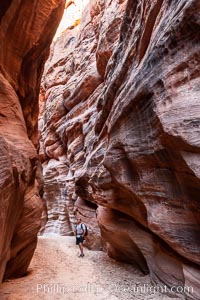
Hiker in Buckskin Gulch. A hiker considers the towering walls and narrow passageway of Buckskin Gulch, a dramatic slot canyon forged by centuries of erosion through sandstone. Buckskin Gulch is the worlds longest accessible slot canyon, running from the Paria River toward the Colorado River. Flash flooding is a serious danger in the narrows where there is no escape.
Location: Buckskin Gulch, Paria Canyon-Vermilion Cliffs Wilderness, Arizona
Image ID: 20772
Location: Buckskin Gulch, Paria Canyon-Vermilion Cliffs Wilderness, Arizona
Image ID: 20772
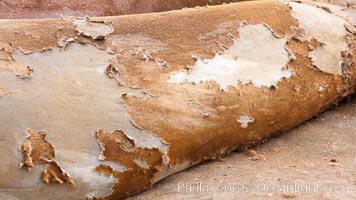
Southern elephant seal, skin molting.
Species: Southern elephant seal, Mirounga leonina
Location: Livingston Island, Antarctic Peninsula, Antarctica
Image ID: 25937
Species: Southern elephant seal, Mirounga leonina
Location: Livingston Island, Antarctic Peninsula, Antarctica
Image ID: 25937
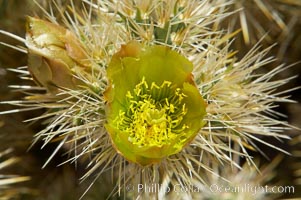
Teddy-Bear cholla blooms in spring. This species is covered with dense spines and pieces easily detach and painfully attach to the skin of distracted passers-by.
Species: Teddy-bear cholla, Opuntia bigelovii
Location: Joshua Tree National Park, California
Image ID: 11934
Species: Teddy-bear cholla, Opuntia bigelovii
Location: Joshua Tree National Park, California
Image ID: 11934
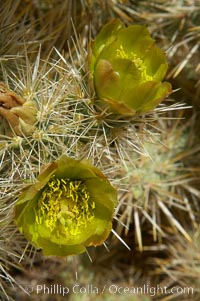
Teddy-Bear cholla blooms in spring. This species is covered with dense spines and pieces easily detach and painfully attach to the skin of distracted passers-by.
Species: Teddy-bear cholla, Opuntia bigelovii
Location: Joshua Tree National Park, California
Image ID: 11935
Species: Teddy-bear cholla, Opuntia bigelovii
Location: Joshua Tree National Park, California
Image ID: 11935
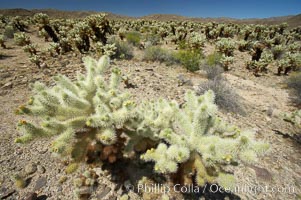
Teddy-Bear cholla cactus. This species is covered with dense spines and pieces easily detach and painfully attach to the skin of distracted passers-by.
Species: Teddy-bear cholla, Opuntia bigelovii
Location: Joshua Tree National Park, California
Image ID: 11979
Species: Teddy-bear cholla, Opuntia bigelovii
Location: Joshua Tree National Park, California
Image ID: 11979
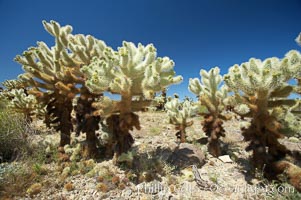
Teddy-Bear cholla cactus. This species is covered with dense spines and pieces easily detach and painfully attach to the skin of distracted passers-by.
Species: Teddy-bear cholla, Opuntia bigelovii
Location: Joshua Tree National Park, California
Image ID: 11980
Species: Teddy-bear cholla, Opuntia bigelovii
Location: Joshua Tree National Park, California
Image ID: 11980
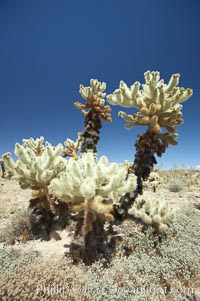
Teddy-Bear cholla cactus. This species is covered with dense spines and pieces easily detach and painfully attach to the skin of distracted passers-by.
Species: Teddy-bear cholla, Opuntia bigelovii
Location: Joshua Tree National Park, California
Image ID: 11982
Species: Teddy-bear cholla, Opuntia bigelovii
Location: Joshua Tree National Park, California
Image ID: 11982
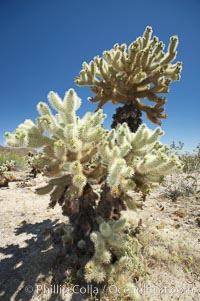
Teddy-Bear cholla cactus. This species is covered with dense spines and pieces easily detach and painfully attach to the skin of distracted passers-by.
Species: Teddy-bear cholla, Opuntia bigelovii
Location: Joshua Tree National Park, California
Image ID: 11983
Species: Teddy-bear cholla, Opuntia bigelovii
Location: Joshua Tree National Park, California
Image ID: 11983
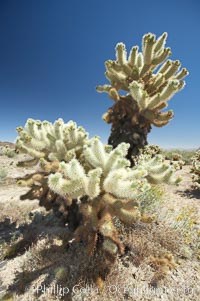
Teddy-Bear cholla cactus. This species is covered with dense spines and pieces easily detach and painfully attach to the skin of distracted passers-by.
Species: Teddy-bear cholla, Opuntia bigelovii
Location: Joshua Tree National Park, California
Image ID: 11984
Species: Teddy-bear cholla, Opuntia bigelovii
Location: Joshua Tree National Park, California
Image ID: 11984
